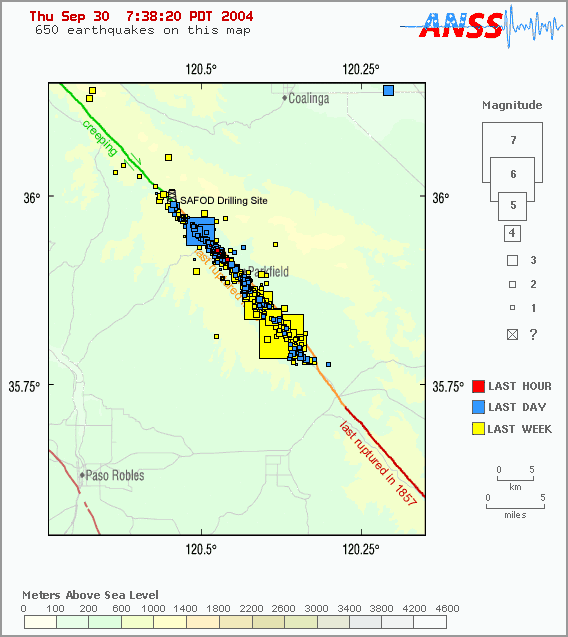A bit more on Parkfield
So what was all that behind the recent Parkfield entry? Here is a bit of explanation:
- Earthquakes sometimes happen on faults, but not always
- Most of the impressive earthquakes of the last few decades have happened on previously unrecognized faults. This has left some of us wondering whether the whole "earthquake fault" thing might be misconcieved. Parkfield occured on the part of the San Andreas Fault that it should have; but it was late. Or was it. As noted in the post the 1922 event might not have been on the SAF. If the 1922 event was on some other fault (unrecognized?) then the period at Parkfield looks alot more like 35 years and the recent event was right on time.
- Predicting the future is hard
- The Parkfield prediction is the only prediction that the USGS has ever made or is likely to make. They got it wrong despite the apparent simplicy of the Parkfield segment behavior. The regularity of the series is pretty striking, but whether it is regular at 22 years or 35 years is completely dependent on where the 1922 event was and that is something that we are not likely to ever be able to determine.
- Earthquake risk is risky
- All of earthquake risk thinking is based on the notion that earthquakes happen on recognized faults in ways that are similar from event to event. If you can't count on earthquakes occuring on faults that you know about, the problem is much harder.
Earthquake physics is very complex. I don't know how it compares in a technical sense to the complexity of the climate system or any other Earth systems. But it does give one pause as we think about trying to make decisons based on predictions.
Aside
For more on the issues surrounding prediction see Sarewitz et al. 2000
End

